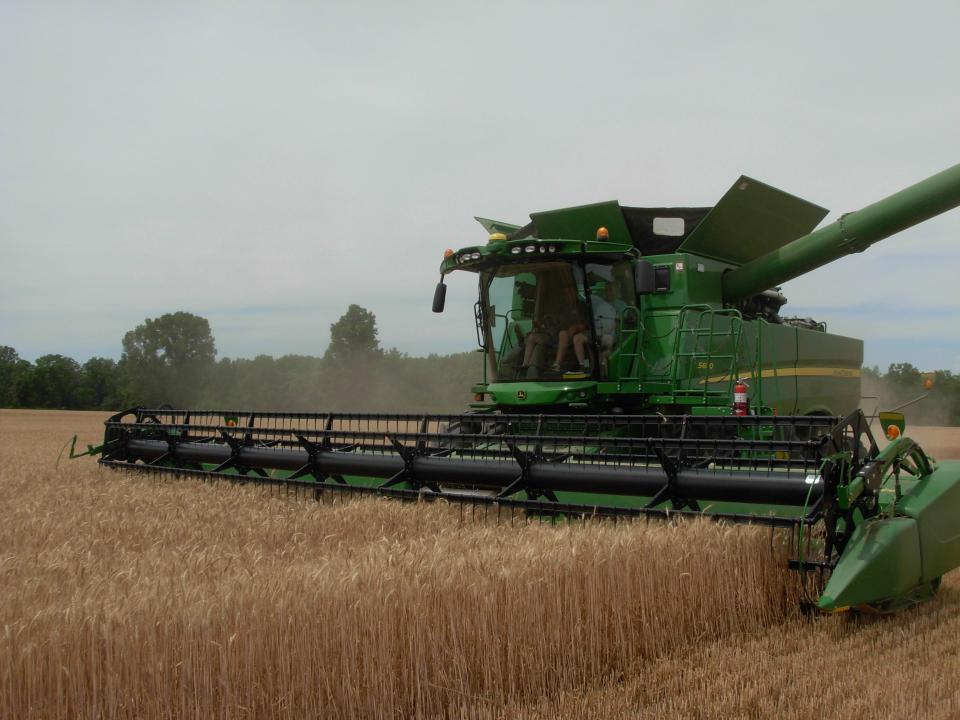Measuring success of a farm is more than just yields and prices

Farming is a business, although it is also a way of life for many farmers.
The “off season” of winter meetings is one time to reflect, recharge and look ahead. Many farmers enjoy the production side of agriculture, driving the tractor and being out in the field, barn or shop. The planning, financial and business side of the job is equally important that someone in the farming operation must do with equal zeal.
Measuring the success of a farm business is more than just knowing yields or prices. It involves managing the cash flow, arranging for a line of credit, completing an income statement and balance sheet, and at this time of the year, calculating taxes. The higher costs, inflation, interest rates and supply chain situation mean doing a lot of analysis to project the anticipated income and expenses. 2022 will be a year of careful analytics that inform the farmer on how to optimize a decision to lease, buy, sell, hire or other large cash decisions.
Careful analysis begins by writing a strategic farm business plan and the “big three” financial statements: income statement, balance sheet and cash-flow statement. Fortunately, lenders need these statements to evaluate the farm’s potential profitability.
The University of Minnesota has an AgPlan that can be a great, free and online tool to customize a business plan. This plan has five business plan templates that can be created, saved, downloaded, printed, shared and edited by the farmer. Each template contains valuable tips and resources for each section of the business plan to assist with the creation of the plan.

New for 2022 is a crop insurance option for farmers who plan to sidedress nitrogen. This new option is called the Post-Application Coverage Endorsement (PACE) that is a supplemental coverage option to the underlying crop insurance policy for nitrogen applications for corn during the v3-v10 growth stages. This option provides insurance if the sidedress application cannot be made. Payments will be based upon approved yields, share of coverage, coverage level and final loss factor. PACE is available to farmers in Southeast Michigan, including Monroe, Wayne, Washtenaw and Lenawee counties.
MSU’s Christy Sprague and Kurt Steinke will be two of the six speakers at the Feb. 8 MSU IPM “Agronomy Day” program in Milan. They will be updating farmers on weed-control strategies and fertility recommendations, both in light of very tight supplies of both herbicides and fertilizer products. The 2022 MSU Field Crop Weed Control Guide and a brand new 2022 Field Crop Insect Management Guide will be distributed to participants. The registration deadline is Feb. 3. The cost is $35 and reservations can be made by calling 269-467-5511. The program will be held at the Family Center at Immaculate Conception Parish, 21 Ann St., Milan 48160.
One of the hot topics at the Great Lakes Crops Summit this week was about agriculture, hackers and ransom ware. Some recommendations included:
Having a data backup, including a 3-2-1 approach. This meant making three backups, with two on site and the third completely off the farm business location.
Printing out documents, such as a contacts record and inventory. Printed documents take more time, but can’t be hacked and may save the business if all the electronic data is lost.
Training all computer operators and include some cyber security.
Communicate with employees, customers or others about any hacking and ransom demands. Designate only one person to do the communication so an exact and careful message is given out.
Ask your insurance agent about a cyber-insurance policy or rider.
Everyone needs anti-virus software. There are military and civilian personnel in other countries whose sole job is hacking into business computers and making financial demands.
This article originally appeared on The Monroe News: Measuring success of a farm is more than just yields, prices

